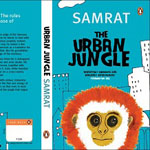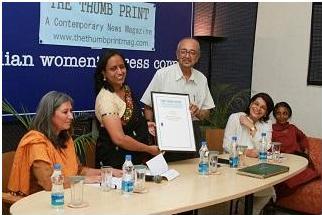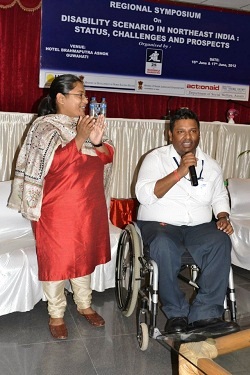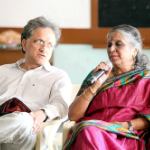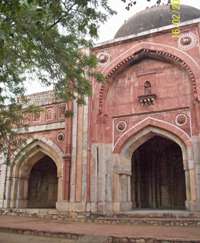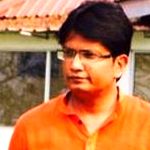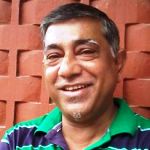After denying forever that there has been a problem of racism in India, the country is finally confronting the fact that such a problem does exist, at least in Delhi. Similar and worse instances of racism occurs elsewhere too, including in Northeast India, but recognition that it is there and it is wrong is yet to sink in. In part this is because of outdated and unsustainable arguments that are trotted out to somehow justify racism.
Perhaps the most common of such arguments is that a certain group is under threat of becoming a minority, or even becoming extinct. This sentiment has been expressed by, among others, certain sections of the Khasis, but also by people from communities that are numerically much larger, such as the Assamese. Most recently, Vishwa Hindu Parishad leader Ashok Singhal called upon Hindu couples to produce at least five children each because he fears the Hindu population as a percentage is shrinking. Considering that India is a country of 1.25 billion people, and 80 percent Hindu, this fear appears to be a case of paranoia.
If Indians were to be silly enough to try and follow Mr Singhal’s directive, the country would surely see civil war and massive social unrest as every system would collapse under the weight of an unsustainable population. Unemployment, starvation and environmental catastrophe would be the net results of such fallacy.
No such thing as pure races
That such arguments are made at all springs from a faulty notion: that there is such a thing as “pure race”. There is no such thing, scientifically speaking.
In recent years, the human genome has been mapped, and genetic studies have established that all human beings are 99.9 percent identical genetically. “Race is a social concept, not a scientific one”, Dr Craig Venter, the leader of the group that first mapped the human genome, told The New York Times in 2000.
Scientists have also established through genetic studies that “pure blood” is extremely rare, being found only in small populations that have been completely isolated from the world. Otherwise, most people in the world today have mixed ancestries. This comes across most starkly in Cyprus, which is divided between Greek Cyprus and Turkish Cyprus. It turns out that genetically, they are pretty much the same people.
African Americans in the vast majority of cases have some European blood. All sorts of people around the world including Turks, North Indians and Pakistanis have some Central Asian ancestry. Punjabis in Indian and Pakistani Punjab would be indistinguishable from one another, just like Bengalis and Bangladeshis.
The scientific consensus at present is that human populations all migrated out of Africa, so if you are interested in origins, we are actually all originally Africans.
The concept of “pure blood” itself is anathema in civilized discourse since the times of Adolf Hitler and the Jewish holocaust. Hitler’s madness led to the deaths of millions of people and the destruction of Germany. Today, no sane person in Europe would talk of racial purity. However, some ignorant fools elsewhere still do.
Linguistic identity is fluid
A second point on which identities are formed is language. People identify themselves and others as Bengalis, Assamese, Nepali, Bihari, etc. Then they want to protect their language and linguistic identities for all time to come. This is also quite silly.
Where were the Bengalis, Assamese and Biharis during the time of emperor Ashoka? The short answer is, they were not there. The Bengali, Assamese, Bihari (and Oriya) identities did not exist at that time. This is because the languages themselves did not exist at that time.
Linguists have established that these languages emerged out of a language called Prakrit that was used during those times. They began as dialects of Prakrit that slowly became distinct languages by around the seventh century A.D.
To try and freeze a linguistic identity for all times is therefore a venture likely to fail. That is the lesson of history.
When geographic identities are formed around languages, things are even more temporary. The state of Andhra Pradesh has just split. There is great historical irony in this.
India during British times and until after Independence consisted of princely states, provinces and the British presidencies of Madras, Bombay and Bengal. It was a Telegu leader, Potti Sriramalu, whose agitation for linguistic states eventually led to India being reorganised into states along lines of language. Sriramalu wanted a state of Andhra Pradesh for the Telegu speakers. He fasted until death in support of his demand, without being able to convince Jawaharlal Nehru and Sardar Vallabhbhai Patel that it was a good idea. After he died fasting, the agitation turned violent, and Nehru was forced to concede the demand for Andhra Pradesh.
Now Nehru’s political descendants have had to undo the state of Andhra Pradesh because the Telegu speakers no longer want to live together in one state. The new state of Telangana is trying to emphasise differences in its dialect. It took barely 62 years for the Telegu linguistic state to collapse.
Shifting boundaries
Political boundaries keep changing all the time. This is a fact of history. States are formed and dissolve. Even countries come and go. Not all are “weak” countries. The Soviet Union was a superpower, but it has vanished in our lifetimes. Anyone who studied geography in the 1980s and has a school atlas from that time should look at it today. The world map has changed.
For India itself, the current boundaries only came into being in 1947. Before that there was no Northeast India, for example. There was no Bangladesh either. Both came into being only much later.
At the time of Partition in 1947, Assam stretched into what is now Bangladesh, which was then part of undivided India. Sylhet was a district of undivided Assam. It is largely forgotten now that Bengal and Punjab were not the only states that suffered division. Assam too was divided, and Sylhet was given to Pakistan.
When Pakistan fell into civil war in 1971 and broke up, Bangladesh came into being.
Someone born in 1942 in Sylhet would therefore have lived as an Indian, Pakistani and Bangladeshi by the time he turned 30, without moving from the spot. The Sylheti identity is also a composite identity. For example, Jaintiapur, the capital of the Jaintias, is in Sylhet.
Assam itself has split into six pieces following the emergence of hill states. More such statehood demands still exist, and continue to fuel conflict.
This is inevitable until people recognize that every state in India is like a mini-India in itself. If you really want to focus on what is different, rather than what is same, you will keep dividing down to village and clan levels. Actually, even families have differences within themselves. Daughters-in-law often want sovereignty from mothers-in-law. The optimal solution is not divorce. It is good relations based on mutual respect.
In today’s world, an educated Khasi from Shillong who speaks English, watches TV, surfs the internet, and follows what is happening in the world will probably have more in common with someone of similar social and economic background on the other side of the world than with someone of different background on the other side of the Khasi hills. This is true for people from all communities.
The days when communities were decided solely on the basis of geography have started receding into history.

